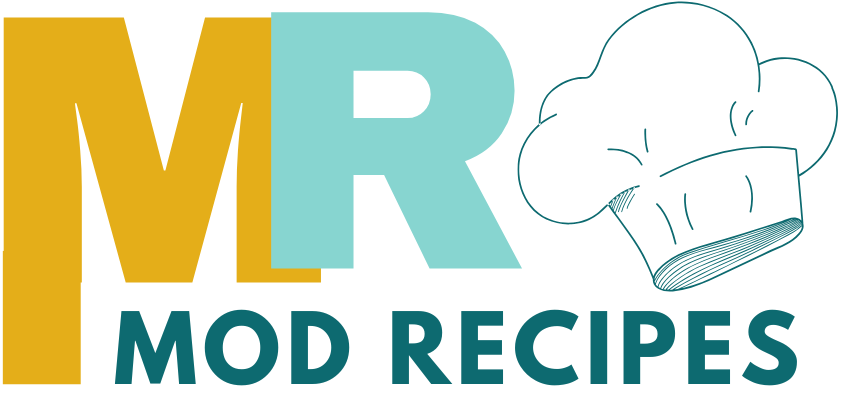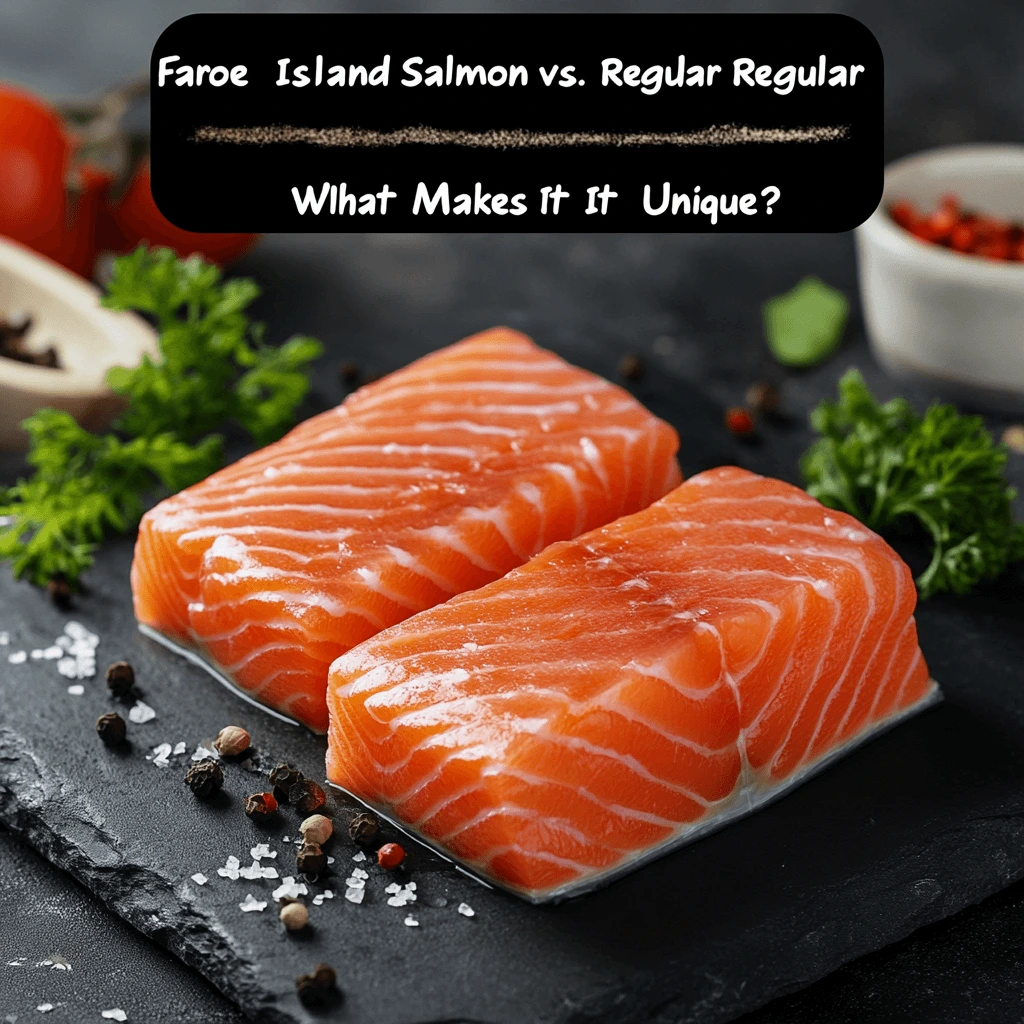Introduction:
Salmon is one of the most beloved fish in the world. Known for its rich, buttery flavor, salmon is a staple in many cuisines. This includes sushi and smoked dishes. When comparing Faroe Island salmon vs regular salmon, it’s clear that one variety stands out for its distinct qualities: Faroe Island salmon.
Faroe Island salmon is often regarded as a premium choice, praised for its taste, texture, and sustainability. But how does it compare to regular salmon? Is Faroe Island salmon worth the extra cost, or is it just another marketing trend?
In this article, we will explore the key differences between Faroe Island salmon and regular salmon. We will also examine its sustainability practices and discuss why it’s considered a top-tier seafood choice.
Faroe Island Salmon vs. Regular Salmon: Key Differences
Origin and Farming Methods: Faroe Islands vs. Other Regions
The Faroe Islands, located between Iceland and Norway, are known for their rugged terrain and pristine waters. These conditions make it an ideal location for farming high-quality salmon. The fish are raised in large, open-sea pens. This allows them to swim in natural ocean currents. This environment mimics the wild habitat of the fish, resulting in a product closer to wild-caught salmon in both taste and texture.
On the other hand, regular salmon is often farmed in more industrialized environments. Farmed salmon can come from various regions, including the United States, Chile, and Canada. Many of these farms use closed tanks or net pens. These conditions can sometimes lead to overcrowding and less-than-ideal living conditions for the fish.
The farming method is a key factor in the final product. Faroe Island salmon is often regarded as having a more delicate flavor due to the natural conditions in which it is raised.
Taste and Texture Comparison
One of the most noticeable differences between Faroe Island salmon and regular salmon is taste. Faroe Island salmon is known for its rich, buttery flavor. It is slightly milder and less oily than other farmed varieties. The texture is firm but tender, making it perfect for a variety of cooking methods, from grilling to poaching.
In contrast, regular salmon can vary in taste and texture depending on its source. Farmed salmon from regions like Chile can be more oily, with a softer texture that some people find less appealing. The taste can also be stronger and less refined, especially if the salmon is raised in less ideal conditions.
Nutritional Differences: Omega-3 Content, Protein Levels
When it comes to nutritional value, Faroe Island salmon stands out as a healthier option. It is packed with Omega-3 fatty acids, which are essential for heart health and reducing inflammation. Faroe Island salmon is often considered richer in Omega-3s than regular farmed salmon. This is because of its diet, which consists of high-quality feed and natural prey in the ocean.
Regular farmed salmon, particularly those raised on lower-quality feed, may not have the same levels of Omega-3s. Furthermore, Faroe Island salmon typically contains fewer contaminants, such as heavy metals and PCBs. These are often found in larger quantities in farmed salmon from less regulated regions.

The Sustainability of Faroe Island Salmon
Ethical Farming Practices in the Faroe Islands
One of the most compelling reasons to choose Faroe Island salmon is the sustainable and ethical farming practices. The Faroe Islands have some of the strictest regulations when it comes to farming salmon. Fish farms in this region adhere to high standards of animal welfare, environmental protection, and food safety.
The water quality in the Faroe Islands is closely monitored to ensure that the fish are raised in a healthy environment. The farms use natural ocean currents to keep the water clean. This reduces the need for chemicals and antibiotics. This is in stark contrast to some regular salmon farms, where overuse of antibiotics and chemicals is a concern.
Environmental Impact of Faroe Island Salmon Farming
Faroe Island salmon farming is considered one of the most environmentally friendly methods of fish farming. The Faroe Islands are committed to reducing the ecological footprint of their farming operations. Many of the farms are located in remote areas, far from populated coastlines. This helps to minimize human impact and protect local ecosystems.
In addition, the Faroe Islands’ fish farms utilize innovative techniques to reduce waste and promote sustainability. For example, they use fish waste as fertilizer for local agriculture. They also utilize technology to monitor and reduce fish feed waste.
On the other hand, regular salmon farms, especially in countries with less stringent regulations, can have a more significant environmental impact. Practices such as the use of antibiotics and synthetic chemicals, along with pollution from excess feed and waste, can lead to water contamination and harm local marine life.
Comparison with Conventional Farmed Salmon
When comparing Faroe Island salmon farming to conventional methods, it’s clear that the former offers more sustainable practices. Faroe Island salmon farms are dedicated to ensuring that their operations are environmentally responsible. In contrast, many regular salmon farms fall short in this area.
The ethical and sustainable nature of Faroe Island salmon farming makes it a more appealing choice for environmentally conscious consumers.
Health Benefits of Faroe Island Salmon

Rich in Omega-3 Fatty Acids
One of the standout health benefits of Faroe Island salmon is its high Omega-3 fatty acid content. These essential fats are crucial for maintaining heart health, lowering cholesterol, and reducing the risk of stroke. Omega-3s also play a role in promoting brain health, supporting healthy joints, and reducing inflammation.
Faroe Island salmon is known to have a higher concentration of Omega-3s than regular salmon. This is largely due to the superior diet of the fish. This makes it a heart-healthy, brain-boosting addition to any diet.
Low in Contaminants: Why It’s a Healthier Option
In addition to being rich in beneficial Omega-3s, Faroe Island salmon is often free from the contaminants that can plague regular farmed salmon. Due to its controlled environment and regulated feed, Faroe Island salmon contains lower levels of harmful substances, such as mercury and PCBs.
These contaminants can accumulate in the tissues of fish, especially those raised in overcrowded or poorly maintained farms. The clean, natural environment in the Faroe Islands significantly reduces the risk of contamination. This makes Faroe Island salmon a safer, healthier option for consumers.
Benefits for Heart Health and Overall Wellness
The Omega-3 fatty acids in Faroe Island salmon not only support heart health but also promote overall wellness. Studies have shown that regular consumption of Omega-3-rich foods, such as Faroe Island salmon, can lower the risk of cardiovascular disease, reduce inflammation, and support cognitive function.
Faroe Island salmon is an excellent source of protein. Protein is essential for building and repairing tissues, supporting muscle mass, and maintaining a healthy immune system. With its balanced nutritional profile, it’s no wonder that Faroe Island salmon is considered one of the healthiest types of seafood available.
Why Choose Faroe Island Salmon: A Premium Seafood Choice
How It Supports Sustainable Fishing Industries
Choosing Faroe Island salmon is more than just a health-conscious decision. It’s a choice that supports sustainable fishing industries. The Faroe Islands have created a model for sustainable aquaculture. They demonstrate that it’s possible to farm fish in a way that protects both the environment and the welfare of the fish.
By choosing Faroe Island salmon, consumers are supporting a model of aquaculture that prioritizes long-term sustainability and ethical practices. This, in turn, encourages other fish farming operations to adopt more responsible practices.
The Growing Demand for Quality Seafood
As more consumers become aware of the importance of sustainability and health, the demand for high-quality seafood, such as Faroe Island salmon, has grown. This growing demand has led to an increase in availability. This makes it easier for people to access this premium product.
The global trend toward healthier, sustainable eating is driving the popularity of Faroe Island salmon. This positions it as a go-to choice for seafood lovers.
The Future of Faroe Island Salmon in the Global Market
Looking ahead, the future of Faroe Island salmon looks bright. As sustainability becomes a more significant concern for consumers and businesses alike, demand for Faroe Island salmon is expected to rise. The Faroe Islands’ commitment to responsible farming practices ensures that they will remain a key player in the global seafood market for years to come.
The continued success of Faroe Island salmon farms will likely inspire more innovation and improvements in sustainable seafood farming worldwide. This will make this premium product even more accessible to consumers.
Conclusion:
In conclusion, Faroe Island salmon offers a unique and superior alternative to regular salmon. With its rich, buttery flavor, firm texture, and outstanding health benefits, Faroe Island salmon stands out in terms of both quality and sustainability. By choosing Faroe Island salmon, you are not only choosing a healthier, more flavorful option. You are also supporting ethical and environmentally responsible farming practices.
As consumers continue to prioritize health and sustainability, Faroe Island salmon is poised to remain a top choice in the world of seafood.


2 thoughts on “Faroe Island Salmon vs. Regular Salmon: What Makes It Unique?”
Comments are closed.